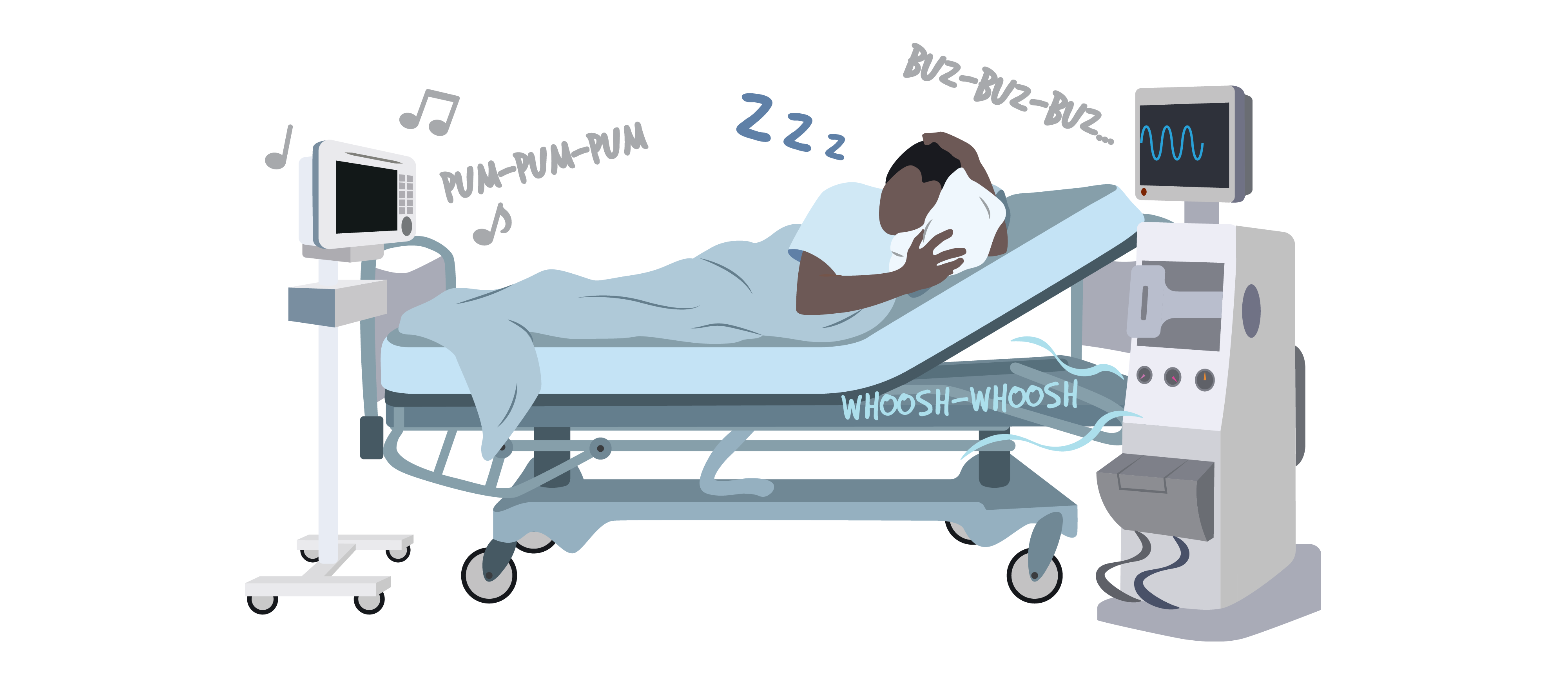
5.5 The Five Main Functions of Sound for User Experience
According to sound designer, Lucas Lacerda (2018), the 5 main functions of sound that relate to enhancing user experiences include sonic branding, anthropomorphism, emotion, conditioning, and feedback:
1. Sonic or Sound Branding refers to the use of specific sound patterns to create an identity or familiar auditory signal connected to a company and its product line. A 2016 study on long-term noise recognition found that even meaningless audio patterns were recognizable for up to four weeks after first hearing them, even if the listener only heard the sounds once (Spectrio, 2021). This research suggests that if you frequently hear a set of sounds organized in a particular sequence (sometimes called a sound sentence) in connection with a specific product brand, you will likely recall it. Indeed, you may experience this effect with websites as well as products or organizations, in a way that enables you to match sounds with specific product or service identities (Lindstrom, 2005). These specific sets of identifiable sounds or audio logos are commonly used in television and are also tied to distinct computer brands. Can you play the melody in your head of your computer’s startup sound (“to imagine” a sound is called “to audiate”)? These repeating sound patterns are designed to encourage user recognition and attachment.

Imagine the Sonic Brand related to this image
2. Anthropomorphism refers to a particular choice of human sound added to a product by adding a humanized sound that we find familiar and associate with specific memories. For example, in the movie “Wall-e”, the robot was not only made to look human-like, but its sounds took on human intonations that increased the audience’s empathy for it.
Anthropomorphic sonic branding is recognizable: even vacuums need help!
3. Emotional Connections drive user experiences, and good sound design often relies on evoking emotional responses. Well-designed sounds have the potential to enhance comfortable and pleasurable experiences (physio pleasure) (Lacerda, 2018). If you play an instrument, you may recall moments of pleasurable immersion in your sound experience.
Good auditory design contributes to a pleasurable experience
We also derive emotional comfort from the soothing sounds of our favourite playlist, a spa environment, or a water fountain. These sounds might motivate us to slow down and relax. What sounds inspire you to change your behaviours?
Emotionally comforting sounds encourage relaxation
Sounds may be designed to trigger either positive or negative emotional responses; some leverage negative reactions as a way to communicate a sense of urgency. Discordant sounds give rise to negative emotional responses. For example, a piercing siren will suddenly alert people to danger to get them to act (this is an induced flight response), whereas a doll playing a melodious lullaby will put a baby to sleep (this is an induced comfort response). In general, negative or discordant sound patterns can affect how we viscerally relate to certain products. For example, the sound of a screeching device usually evokes a negative response that we can physically or viscerally feel.
Poorly designed sounds may cause sensory confusion
It is important for designers to recognize that poorly designed sounds have the potential to negatively influence experiences with and judgments of a product (psycho-pleasure) and deter people from interacting with it.
Wanted and unwanted sounds are differentiated by who wants or does not want them. For example, in a hospital environment, there are good reasons for medical alarms to notify staff about patient conditions. These are considered wanted sounds. Hospital staff, however, suffer from alarm fatigue, given that there are so many potential alarms sounding during any given hour, and therefore may ignore the alarms that go off longer than necessary (Özcan et al, 2017; Van Egmond, 2009). These may be considered unwanted sounds. Moreover, ongoing sound disturbances have been shown to have negative effects on people’s memory, attention, and mood, even to the point of causing PTSD (Post-traumatic Stress Disorder).
Unwanted sounds are disturbing in the hospital

Innovative melodious sounds in the hospital may be ‘wanted’
According to Case and Day (2019), most of us have some degree of sound sensitivity. The kinds of sounds we commonly find annoying include unwanted sounds with low frequencies like those of large trucks, high frequencies like chalk screeching on a chalkboard, unexpected ‘noise pollution’ like jackhammers outside the window, or repetitive sounds like the same audio playlist looping every twenty minutes over the entire workday. In recent years product development teams have begun to focus on designing quieter, more harmonious, or more silent product sounds rather than the beeps, dings, and alarms of earlier product versions (van Egmond, 2009). The term sound quality was first used to identify irritating environmental sounds that could be reduced or modified in some way to be less problematic. The term sound quality does not, however, describe the emotional, semantic, and sensorial experiences related to sounds (van Egmond, 2009).
4. Conditioning plays a key role in sound design by using sounds to direct or change people’s behaviours and encourage responses or attachment to products and environments. We respond to certain sounds that trigger ideo- and socio-pleasure through their ties to meaningful or cultural experiences in our lives, like sounds from our childhood, sounds tied to repeated sonic messages, and sounds that play on our imagination.
Designers and marketing professionals look for ways to influence our ability to experience adaptive emotions that “draw upon memories of a similar experience in the past and transfer those positive feelings to the new auditory experience” (Lindstrom, 2005). For example, purchasing patterns can be directly affected by music playing in stores, as familiar music may encourage you to stay longer. Once emotions are tied to positive sensory experiences, the potential for customers to become loyal to product brands increases (Lindstrom, 2005).
Soundmarks or conceptual sounds are designed to evoke positive emotional responses because they draw upon unique and rare sounds that are usually related to a specific cultural experience through languages, dialects, and music. Sometimes these keynote nature sounds are connected to a community experience. For example, the mechanical sounds of a tractor cutting grass in the countryside or the traffic sounds of the city. These could include the sounds of the ice cream truck bells, the Islamic call to prayer, or emergency sirens, which are unique to places and cultural activities.
Ice cream truck bells are soundmarks that evoke cultural childhood memories
5. Sound Communication and feedback enables us to receive messages and information about the state of our products – “ding, ding” the door is open, “beep, beep, beep” the truck is backing up, “ping” the text was sent. These auditory signals alert, verify, or inform people during their product interactions.
Sounds provide feedback and communicate messages
Auditory User Experience begins with awareness because we are not fully aware of the sounds around us. Often it is only when asked to recognize, remember, and/or identify them do we stop, listen, and make auditory associations (Lacerda, 2018). We need to be actively listening to be able to identify different sounds, discriminate between sounds within a multi-pattern context, and retain and interpret the sounds into a meaningful story.
Active Listening contributes to discrimination within a multi-pattern context
When we interact with products, there is often an auditory message – whether it’s the sound of a hammer hitting a nail, fingers typing on a keyboard, a chainsaw slicing a tree, a swing during its back-and-forth motion in the park, a gas tank popping open, or a garden hose watering the flowers. These sounds, while part of the larger soundscape within which they occur, communicate with us about the nature and quality of our interactions – did the hammer hit the nail, are all the keyboard keys making contact, is the chainsaw slicing clearly through the tree, is the swing well oiled, is the gas tank top secure, is the water flowing through the hose? At this scale, there is a significant opportunity for designers to match sounds with the expectations and needs of the people who will be using those products.
Auditory feedback should be easy to understand and differentiate
Activity Time!
Match the 5 functions of sound to their examples.
5 functions of sound
Next section: 5.6 Categories of Sound

